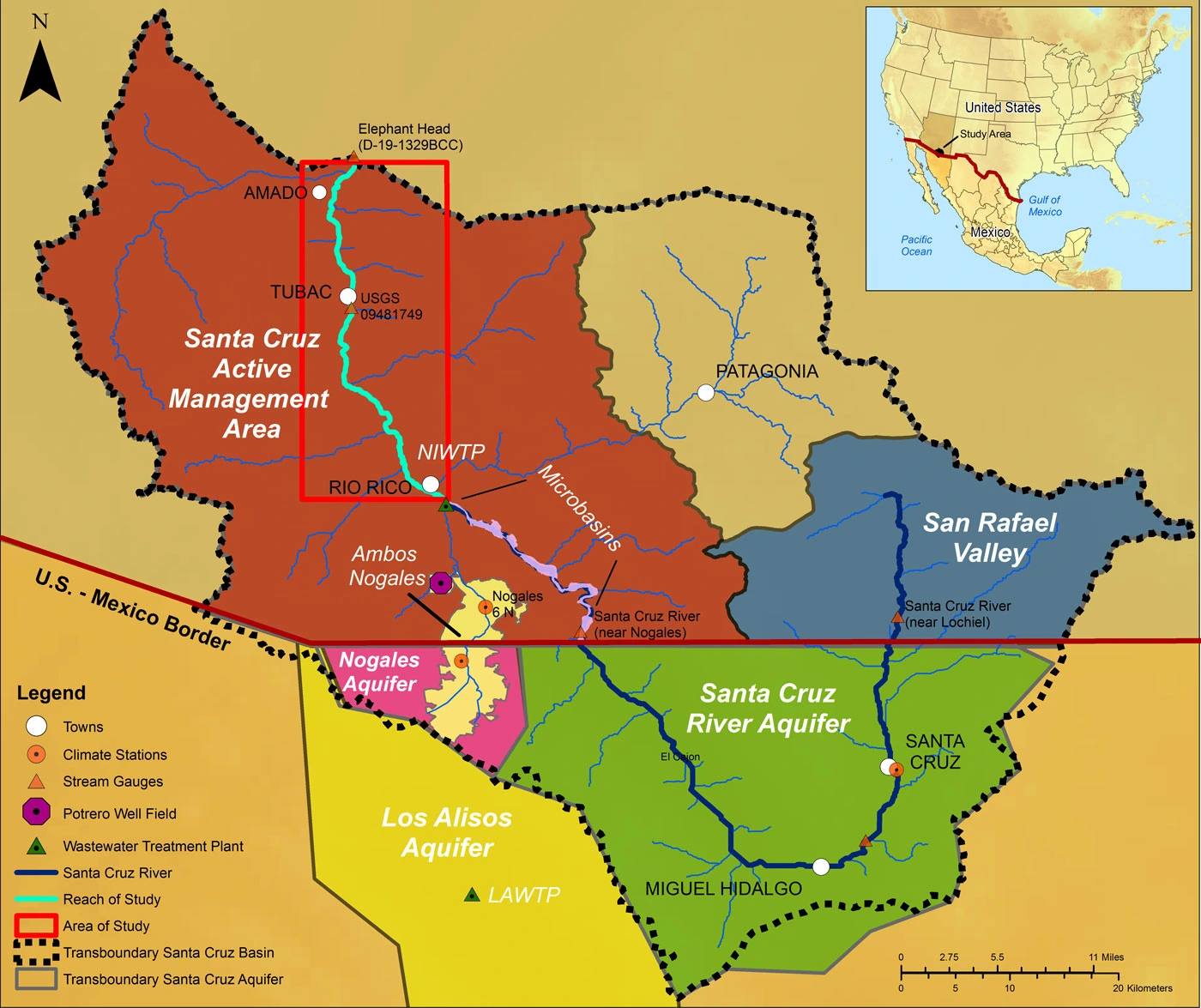
ABSTRACT: Assessing groundwater resources in the arid and semiarid borderlands of the United States and Mexico represents a challenge for land and water managers, particularly in the Transboundary Santa Cruz Aquifer (TSCA). Population growth, residential construction, and industrial activities have increased groundwater demand in the TSCA, in addition to wastewater treatment and sanitation demands. These activities, coupled with climate variability, influence the hydrology of the TSCA and emphasize the need for groundwater assessment tools for decision-making purposes. This study assesses the impacts of changes in groundwater demand, effluent discharge, and climate uncertainties within the TSCA from downstream of the Nogales International Wastewater Treatment Plant to the northern boundary of the Santa Cruz Active Management Area. We use a conceptual water budget model to analyze the long-term impact of the different components of potential recharge and water losses within the aquifer. Modeling results project a future that ranges from severe longterm drying to positive wetting. This research improves the understanding of the impact of natural and anthropogenic variables on water sustainability, with an accessible methodology that can be globally applied.

